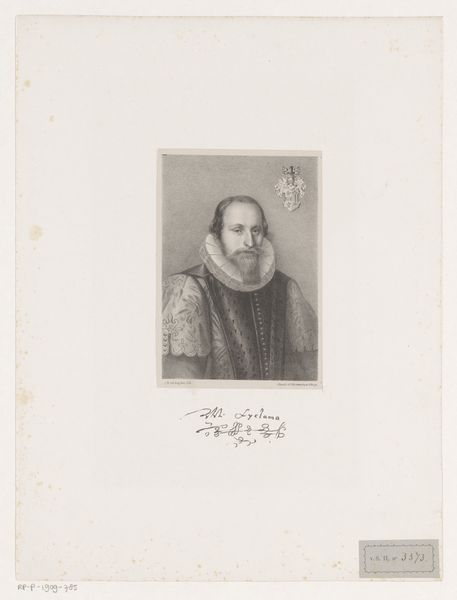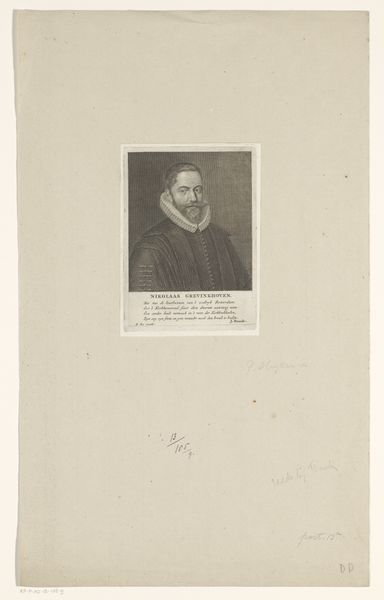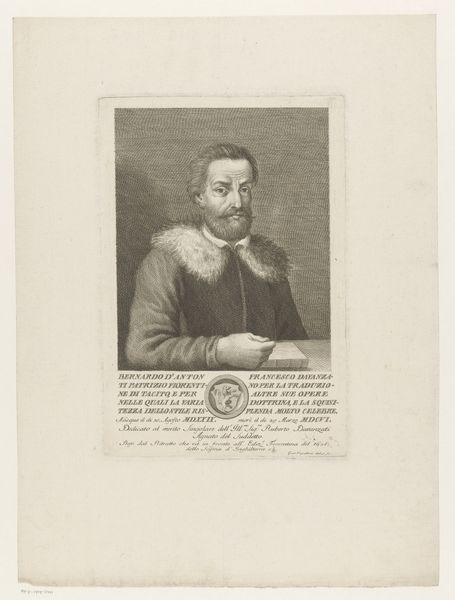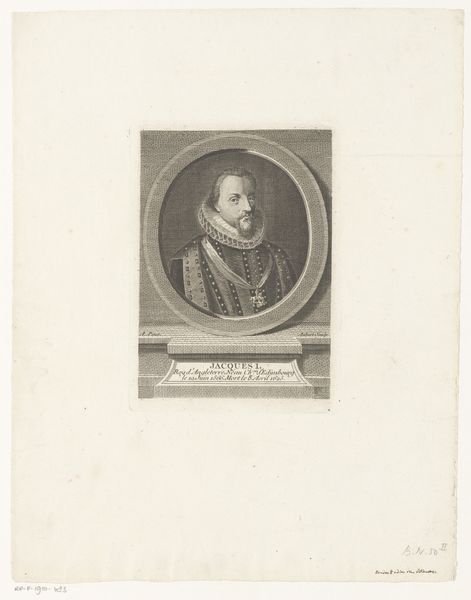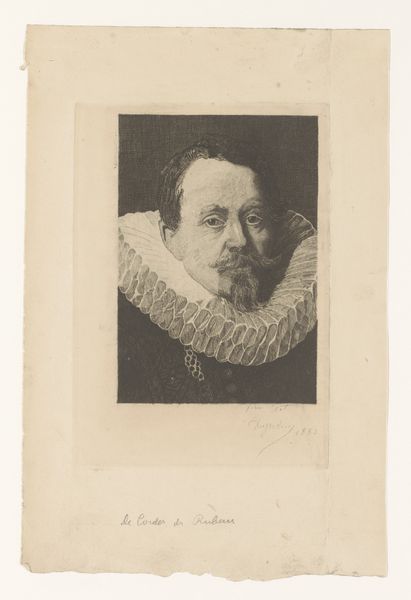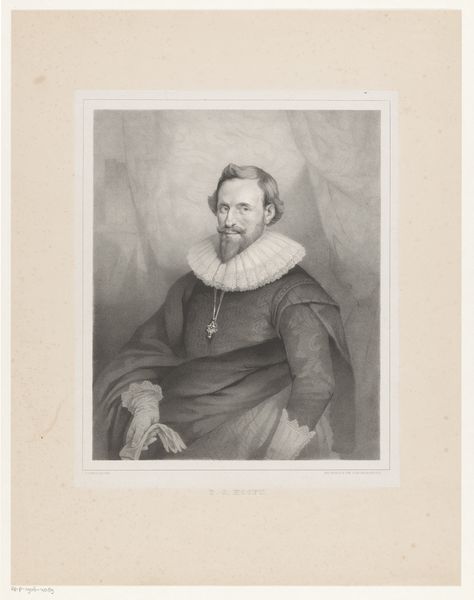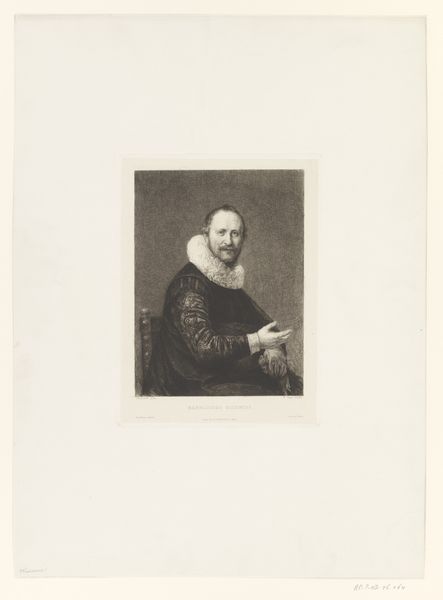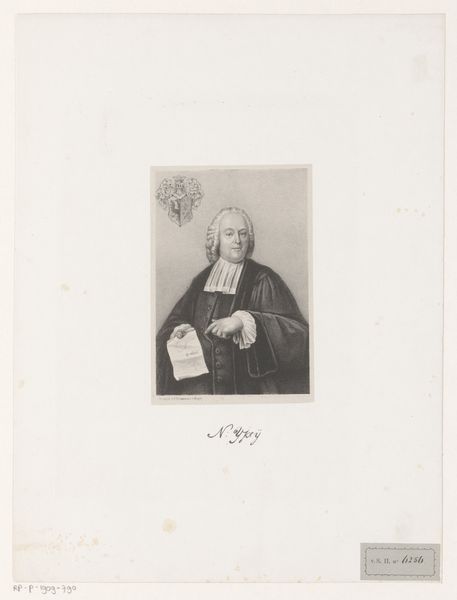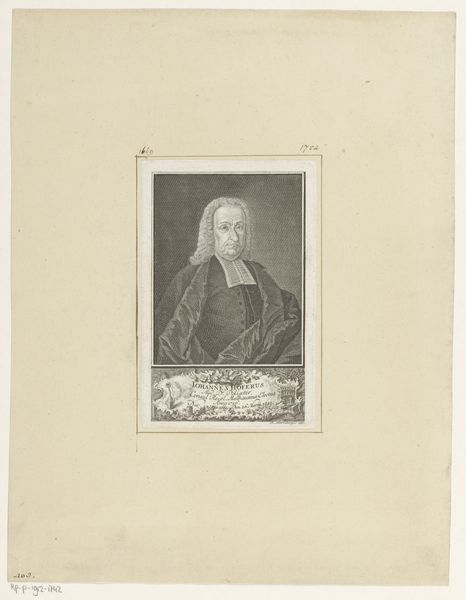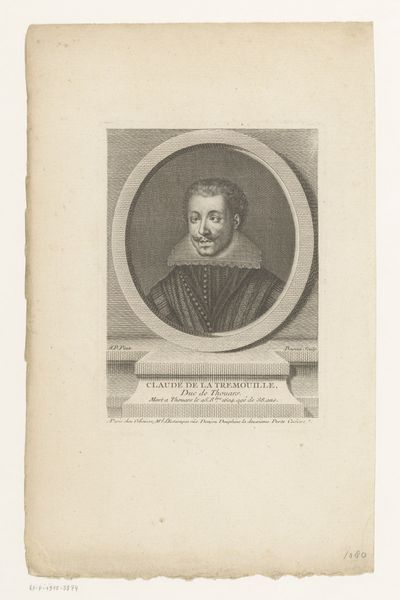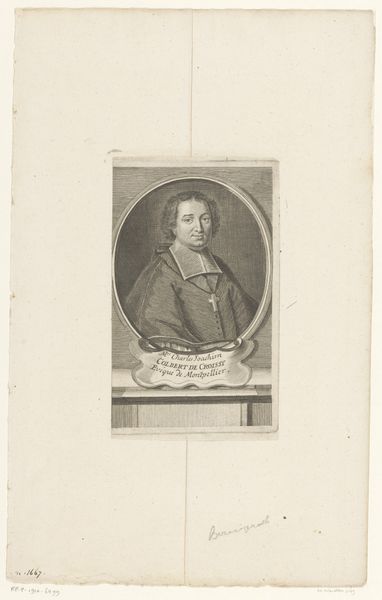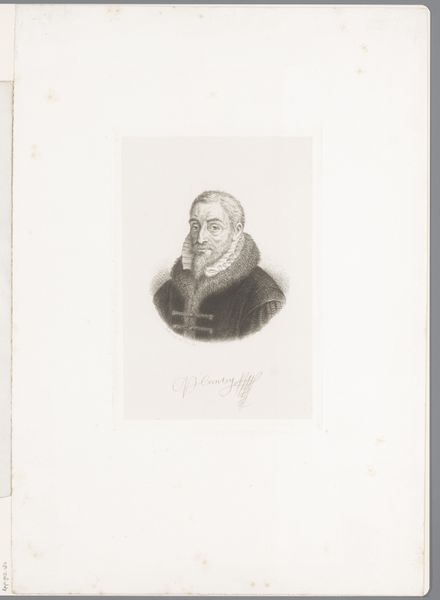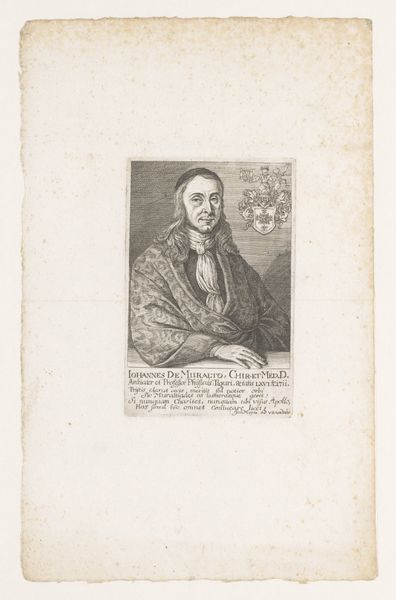
Dimensions: height 340 mm, width 255 mm
Copyright: Rijks Museum: Open Domain
This is a portrait of Hendrik Rhala, created by Johannes Hermanus van der Heijden using etching and drypoint. The image evokes the Dutch Golden Age, a period when the Netherlands experienced unprecedented growth in trade, science, and the arts. Note the elaborate ruff, a visual marker of status and wealth that signals Rhala's position within Dutch society. The coat of arms in the upper right is also a clear indicator of status within the Dutch political system. Consider the social conditions that made such an image possible: a prosperous merchant class and a well-established tradition of portraiture. But to truly understand this image, we must consider it within the context of the artist’s time. Van der Heijden created this portrait in the 19th century, which saw a surge of interest in Dutch history and culture. This etching, then, speaks to the way that national identity and historical memory are constructed through images. To gain a deeper understanding, we might consult period documents, such as trade records or genealogical charts. By combining visual analysis with historical research, we can appreciate how this artwork reflects, and shapes, the ongoing dialogue between past and present.
Comments
No comments
Be the first to comment and join the conversation on the ultimate creative platform.
